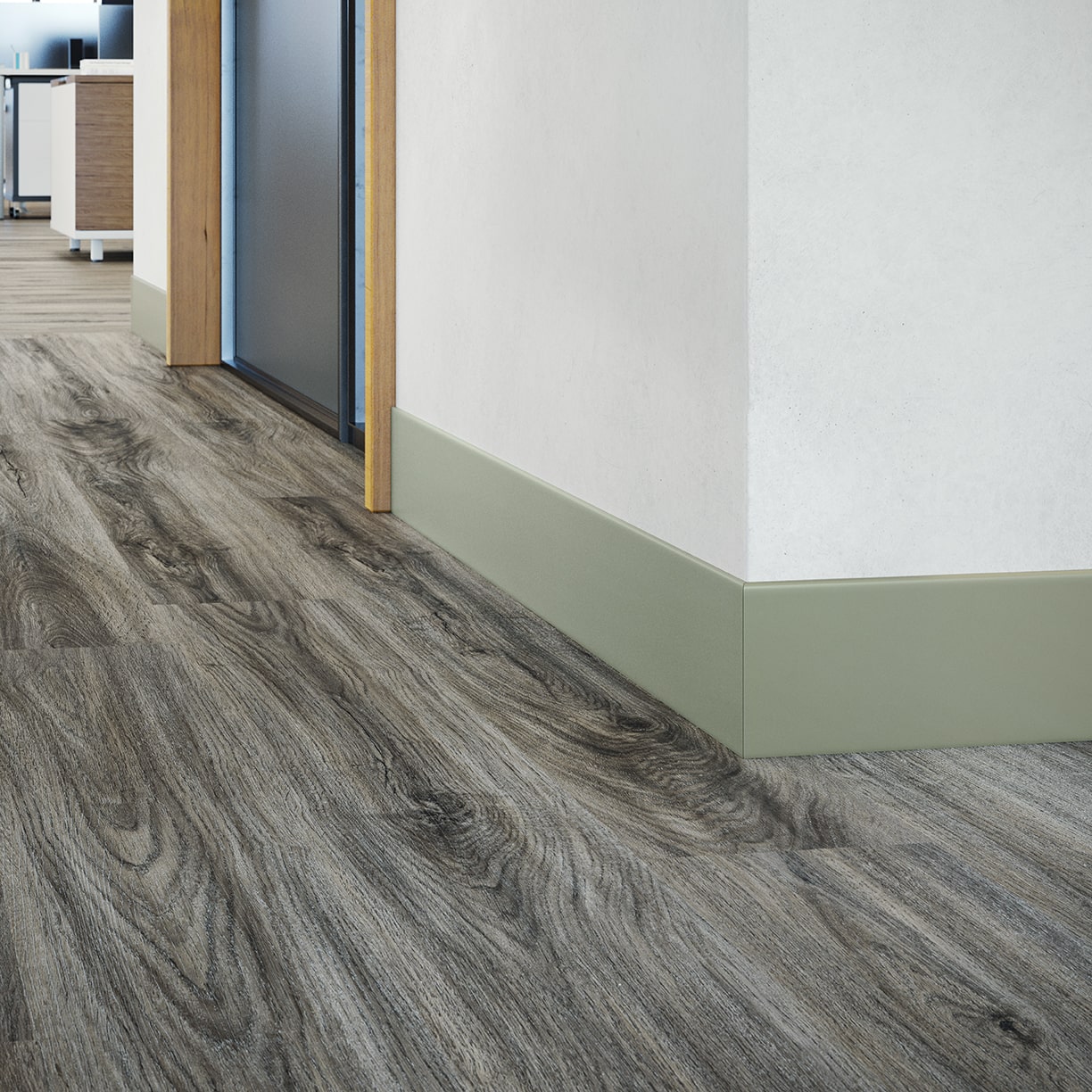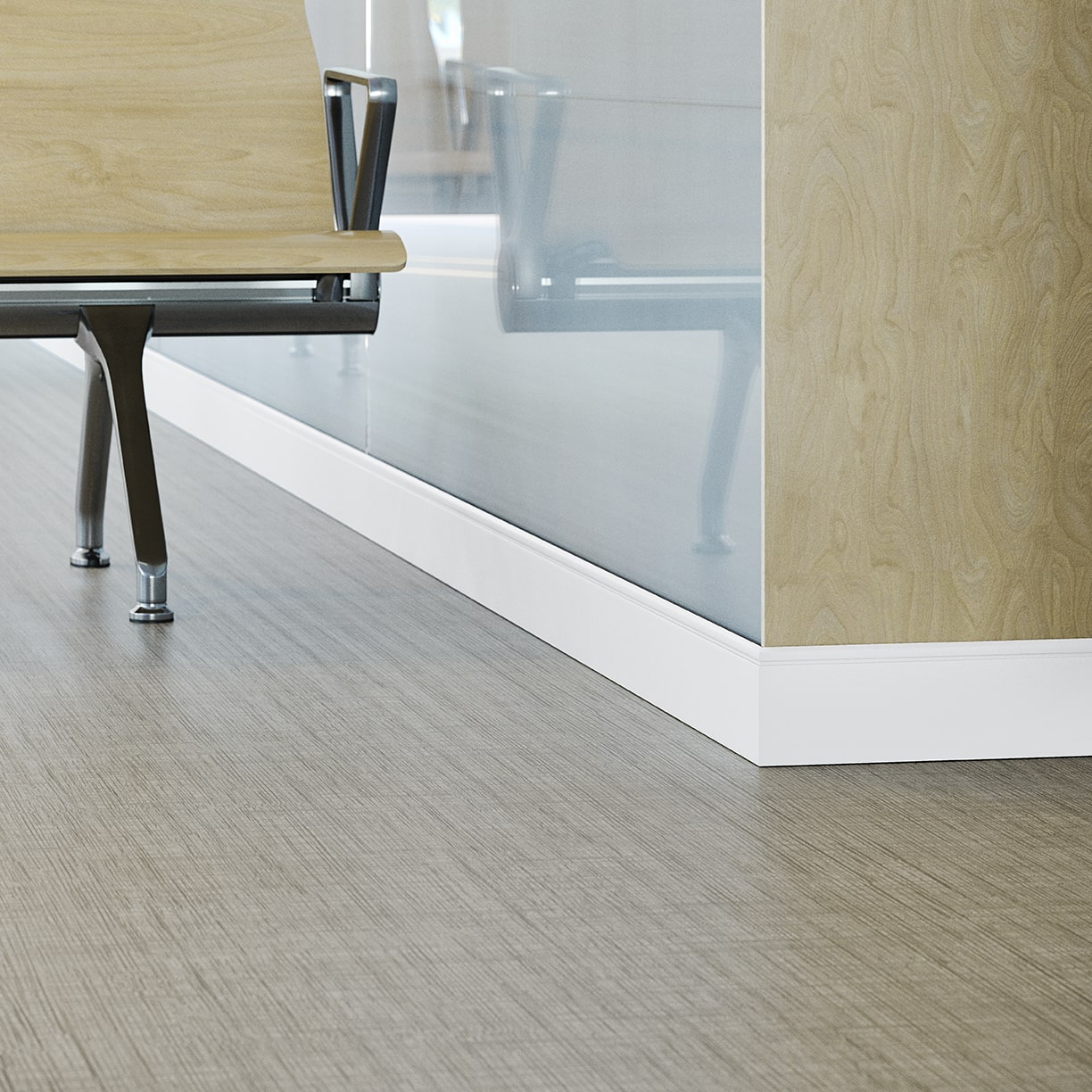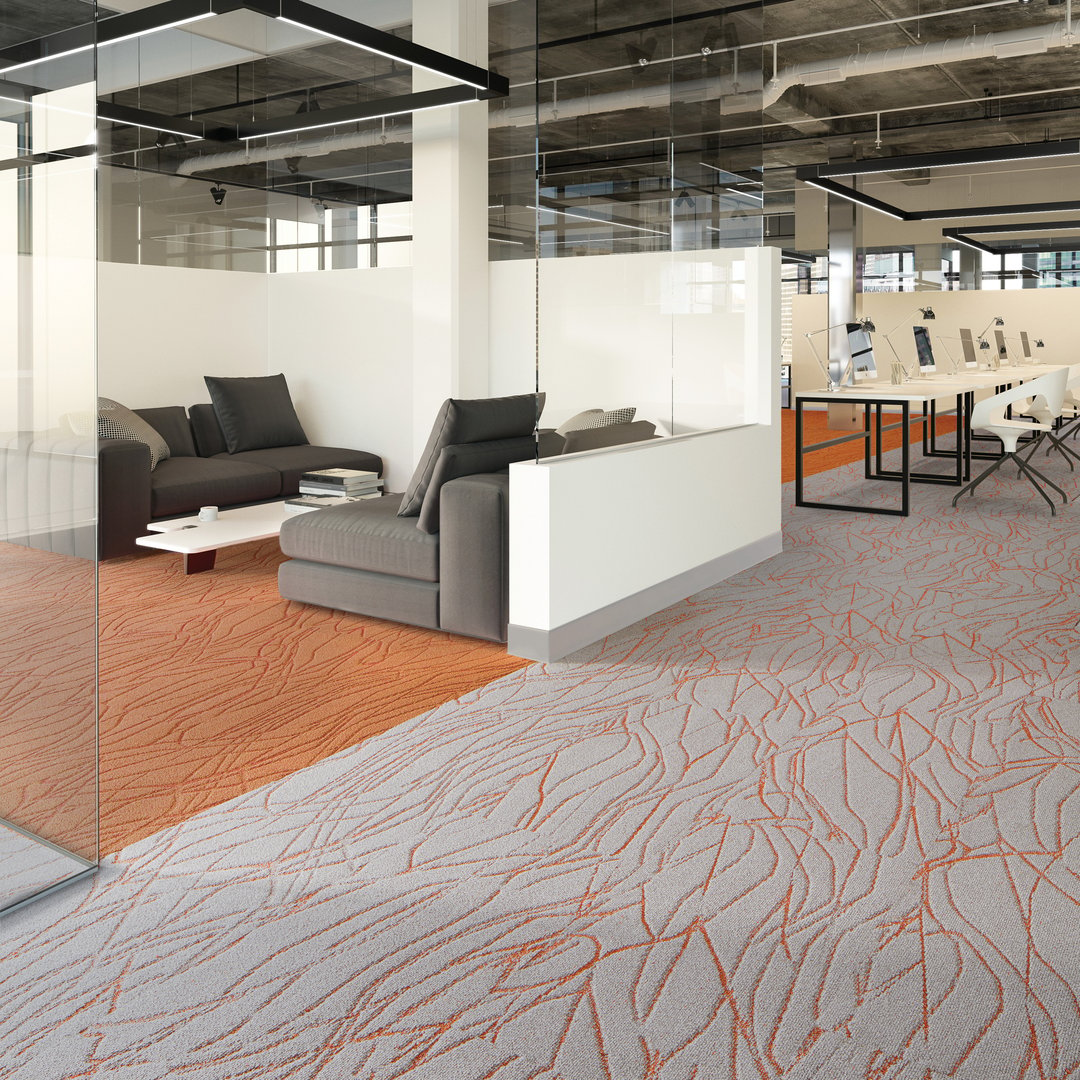When designing or specifying a commercial space, wall base may not be your top priority. It often gets overlooked and is ignored once it is installed. However, it takes a massive amount of abuse from vacuum cleaners running into it, shoes kicking it and even carts bumping into it. That’s why choosing the right wall base can make all the difference in appearance, performance and the life-cycle costs of the project.
As a flooring manufacturer, we want to ensure the success of our products for years to come, and the accessories that go with the floor like wall base can do just that!
In this article, we’ll help you navigate how to select just the right rubber wall base for your project.
Choosing the Right Type of Rubber Wall Base
Thermoplastic Vinyl (TV)
Thermoplastic vinyl (TV) is a composite material made almost entirely out of polyvinyl chloride (PVC), although it is considered one of the three types of rubber. Because it is pliable at high temperatures, TV is heated, extruded and then shaped into a final product.
TV has many benefits. Because it can be heated and cooled many times without the loss of quality, it can be recycled. It is the least expensive of the three types of rubber, making it a budget-friendly option for wall base. However, TV is more difficult to handle and install than other types of rubber, and it is possible for white stress lines or discoloration to appear when forming corners. While the matte finish can help hide scuff marks, TV is more susceptible to visible gouges and nicks than other types of rubber.
In low traffic settings (emergency stairways, secondary stairwells, and light commercial applications), TV is a good economical choice for wall base, accessories, flooring and stair systems.
Related: How To Choose Stairway Materials
Premium TS Molded Wall Base 204 Gray & Confluence Modular Carpet - Optimism 81010
Thermoplastic Rubber (TP)
Thermoplastic rubber (TP) is a rubber compound of vinyl and rubber. Like TV, TP is heated, extruded and shaped into a final product. It also does not lose quality with heating and cooling, which means it can also be recycled.
Before installing TP, the wall base requires an acclimation period on-site of at least 24 hours. Like TV, it is possible for stress lines and discoloration to appear when forming corners. It also has a matte finish to help hide gouges and nicks.
Because it is a compound containing rubber, TP is the “better” choice for rubber wall base. The place to use TP is in medium and medium heavy traffic settings and when budget is still a concern.
At Mannington Commercial, we offer Type TP and Type TV in wall base, stair treads and accessories. Check out our selection of rubber accessories.
Thermoset Vulcanized Rubber (TS)
Type (TS) rubber is Thermoset Vulcanized rubber. It is either a synthetic or natural rubber that has virgin fillers and additives mixed together. TS contains the most amount of rubber of the three types, and the vulcanization of heat and pressure improves elasticity, resilience, tensile strength, viscosity, hardness and weather resistance of the materials. The chemical process of vulcanization is a key difference between the types of rubber. Because it does not contain PVC, TS has environmental advantages and may contribute to LEED credits.
Type TS is the best choice of durable rubber but is also the most expensive. Because of its ease of installation, many installers prefer Mannington Commercial’s molded TS wall base which provides dimensional stability over extruded TS wall base. The homogeneous composition of TS means nicks and gouges don’t show up as much as in TP or TV. Additionally, TS is not prone to shrinkage or stress marks. Choose TS for heavy traffic applications.
Related: Best Commercial Rubber Flooring Options

Edge Effects Simplicity - Sea Green 088 & Uninterrupted Wood - Heartwood Oak UN204
Choosing the Right Wall Base Height
Rubber wall base can come in heights of 2.5”, 4”, 4.5” and even 6”. The height you need really depends on the type of traffic and abuse the walls in your space will need to accommodate.
Consider how much equipment and traffic patterns that can cause bumps, scrapes and scratches along the bottom of the wall before selecting a base height. The more abuse you think your walls will get, the taller the base should be to protect your space.
The most popular height is 4” for commercial applications, but 6” is best suited for healthcare and k-12 environments.
Choosing the Right Thickness
Wall base most often comes in .80” and .125” (or ⅛”) thicknesses. The greater the thickness, the more protection you have against ultimately damaging your walls with traffic abuse.
Choosing the Right Style (Cove vs Toeless)
Have you ever wondered what toeless means with regard to wall base? You are not alone. Toeless, or straight wall base is simply a wall base without a lip or “toe” at the bottom. It goes straight up and down only, making it ideal for carpets where gaps are not as likely to be seen as other flooring types.
Cove wall base, on the other hand, is a base with a toe or lip at the bottom of the base to help blend into the flooring. This type of base is most often used to help cover gaps, especially around corners. Use cove base on floors like rubber, wood or resilient sheet to help create a seamless look.
Choosing the Right Packaging
Wall base often comes in either cartons with standard lengths or on rolls. For long stretches of hallway or corridors, long rolls can be very handy. However, for spaces without massive runs, cartons might be your best option. Plan with your installer before deciding which packaging to choose for the best installation with little waste.

Edge Effects Etched - White 401 & Intersect Foundation PD111
Choosing the Right Design (color/profile)
Although wall base might not be at the forefront of your mind when designing a space, this important accessory can certainly make or break the room. That’s why it’s important to consider the color and profile of wall base to accentuate just the right feel in your space. Most wall base comes in a myriad of colors, so you can choose just the right coordinating color. While gray and beige are the most popular colors, pops of color might be appropriate in certain settings, so it’s nice to have choices.
Need a more elegant look than your run of the mill rubber wall base? Some rubber wall base is actually sculptured and comes in different profiles to fit your design needs. Our Edge Effects wall base is a sculptured wall base that can be used as an architectural accent, creating the effect of a milled wood base without the expensive installation, indentations, scuffs and abrasions.
Now you’re aware of the different options you have for rubber wall base (and you won’t forget to specify it on your next project)! Rubber wall base can be the bow that ties your whole project together and ensures the investment you made on the flooring.
You can view all of the different options Mannington Commercial has to offer here.
Download a free guide to Rubber Stairways and Wall Base 👇
In this guide you'll learn about the 3 main types of rubber and where to use them best as well as how to design stairways to be in compliance with IBC regulations. We'll also look at how to specify rubber wall base to finish out your space with style and performance.


